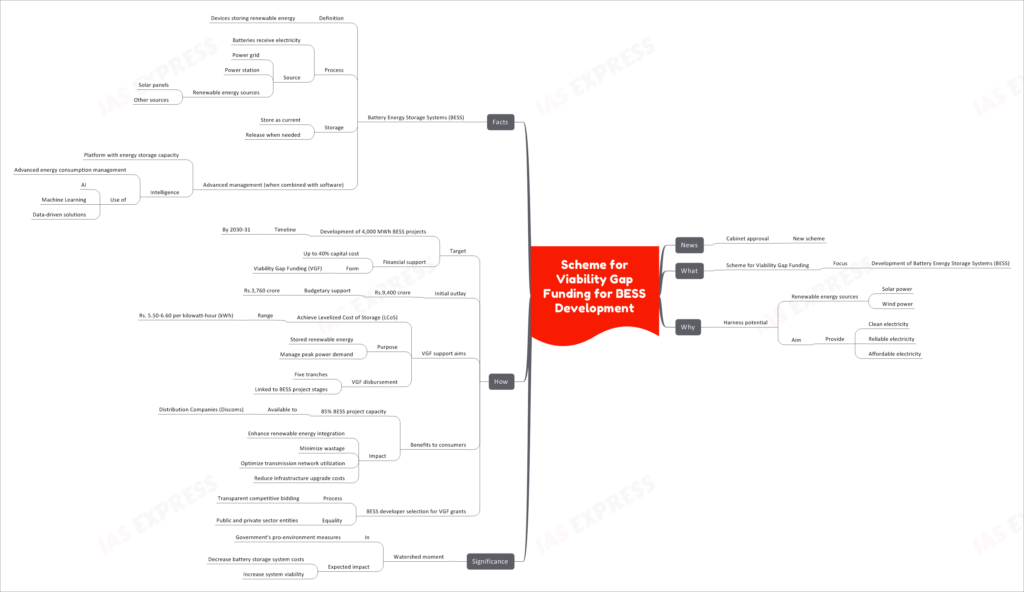Scheme for Viability Gap Funding for BESS Development

The Cabinet has recently greenlighted a novel scheme, aiming to bridge the viability gap in the development of Battery Energy Storage Systems (BESS). This initiative showcases the government’s commitment to leveraging renewable energy sources, especially solar and wind power.
News Highlights
- Key Update: Cabinet’s nod to a new viability gap funding scheme.
Scheme Focus: Understanding the Objective
- Essence of the Scheme: Viability Gap Funding
- Core Concentration: Progression and evolution of Battery Energy Storage Systems (BESS).
The Rationale: Why Now?
- Harnessing Nature’s Bounty: Tapping into the abundant potential of:
- Solar energy
- Wind energy
- The Ultimate Vision: Offering electricity that is:
- Clean
- Reliable
- Cost-effective
Significance: A New Era in Energy
- Historic Move: A significant stride in the government’s environmentally-conscious measures.
- Projected Outcomes:
- Plunge in battery storage system expenditures.
- Augmentation in system viability.
The Methodology: Achieving the Vision
Goals & Financial Structure
- Ambition: Develop 4,000 MWh of BESS projects
- Target Date: By 2030-31
- Fiscal Backing:
- Covering up to 40% of the capital costs.
- Nature: Viability Gap Funding (VGF)
- Initial Budgetary Allocation:
- Rs.9,400 crore
- Direct budgetary backing of Rs.3,760 crore.
- Rs.9,400 crore
VGF’s Purpose and Modalities
- Aim: Attain a Levelized Cost of Storage (LCoS) between Rs. 5.50-6.60 per kilowatt-hour (kWh).
- Primary Uses:
- Stockpiling renewable energy.
- Handling peak power demand situations.
- Disbursement Process:
- Through five structured tranches.
- Closely tied with the developmental stages of BESS projects.
End-user Advantages
- Accessibility: 85% of the BESS project’s output to be available for Distribution Companies (Discoms).
- Anticipated Positive Outcomes:
- Bolstering the incorporation of renewable energy.
- Curtailing energy wastage.
- Maximizing the efficiency of transmission networks.
- Slashing costs associated with infrastructural upgrades.
Grant Allocation to BESS Developers
- Procedure: A transparent competitive bidding mechanism.
- Participation: Equal opportunities for both public and private sector contenders.
Spotlight on BESS: Quick Facts
- What’s BESS?
- Apparatuses specifically designed to accumulate renewable energy.
- Operational Dynamics:
- Batteries draw electricity from various sources like the power grid, energy stations, solar panels, etc.
- Store it as current and discharge it as required.
- When Teamed Up with Advanced Software:
- Becomes an intelligent platform possessing energy storage capability.
- Equipped with cutting-edge energy consumption management tools, empowered by:
- Artificial Intelligence (AI)
- Machine Learning
- Data-centric solutions.
If you like this post, please share your feedback in the comments section below so that we will upload more posts like this.

